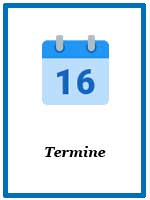
Sydowia Vol. 78 E-Book/S 145-164
Structure of conidial fungi communities in litter decomposition ..
Download-Artikel
Artikel Nr 3306
erschienen 12.11.2025
Preis 28,00 €
Lieferstatus 

Buchbeschreibung
In: Sydowia 78, (2025): 145-164; ISSN 0082-0598, DOI 10.12905/0380.sydowia78-2026-0145, Published online on November 12th, 2025Structure of conidial fungi communities in litter decomposition in two riparian areas of the Atlantic Forest in Northeast Brazil
Wanderson Luiz Tavares*, Matheus de Jesus Sá Silva, Virton Rodrigo Targino de Oliveira & Elaine Malosso
Department of Mycology, Federal University of Pernambuco, Av. Ciências da Vida, s/n, 50740-600, Recife, PE, Brazil
* e-mail: wanderson.tavares@ufpe.br
Tavares W.L., Silva M.J.S., Oliveira V.R.T. & Malosso E. (2025) Structure of conidial fungi communities in litter decomposition
in two riparian areas of the Atlantic Forest in Northeast Brazil. – Sydowia 78: 145–164.
The Brazilian Northeast contains poorly studied fragments of the Atlantic Forest. These fragments harbour a great diversity of organisms, among which conidial fungi stand out, as they play a fundamental role in maintaining ecological balance by participating in the decomposition of organic matter and nutrient cycling. This study aimed to investigate the diversity of conidial fungi that decompose litter in two areas of the Atlantic Forest, in Pernambuco (PE) and Paraíba (PB), evaluating fungal biomass, abiotic factors and chemical composition of the litter. Mixed decomposing litter was collected from the forest floor on the banks of streams in the RPPN (Private Natural Heritage Reserve) Serra do Contente (PE) and in the REBIO (Biological Reserve) Guaribas (PB). Two expeditions were carried out in each area. The material was incubated in moist chambers and observed daily for fungal structures over a period of 45 days. A total of 74 taxa were identified, resulting in 203 occurrences. We present an extensive list of microfungi and report a new occurrence in the Atlantic Forest. Ecological indices showed no significant difference between the conidial fungal communities in the two areas. This study highlights the high richness of conidial fungi in these regions of tropical rainforest.
Keywords: microfungi, Atlantic Forest, diversity, taxonomy, hyphomycetes.





